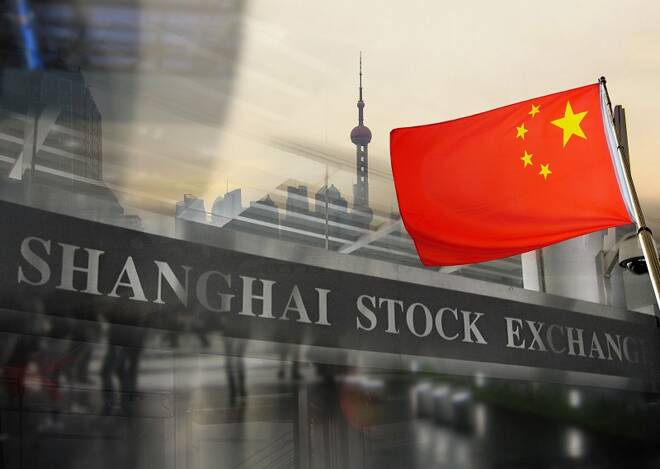Advertisement
Advertisement
Presumably A More Infrangible State Of Trade War Détente
By:
Given the very modest expectations of a breakthrough on some of the more contentious issues in this US-China friction, the hurdle to disappoint was very high.
As we turn the page on this chapter of the trade war saga, the Phase One deal inks the commitment from China to increase its purchases (even if there remain concerns on how this works out). And we have a credible mechanism for resolving disputes, so it should be sufficient for the markets to refocus on other things. After all, market expectations for a Phase 2 deal are negligible.
The main benefit to the deal is that the US and China frictions are unlikely to worsen in the coming months, so we have reached a peak tariff of sorts, and this will allow traders to return focus on other things. The state of the tech cycle; benchmark driven portfolio flows, fiscal policies, medium-term supply chain shifts, and of course, the data to determine the overall positive economic impact the truce will have. As I always and respectfully remind my colleagues, we trade the data, not opinions, and certainly not unsubstantiated headlines.
Despite some negative spin-doctoring this morning, it’s hard to argue that the deal marks a significant step in ending the frictions that have cast a dark cloud over global economic growth. And on the margin should be favorable for risk markets. But positioning will again be critical if not worrisome in terms of reactions to the data and whatever headline flare-up might occur. After all, it’s been a one-way street for the stock market since October 11th the day President Trump first announced a deal with China. Even as we move into a presumably more infrangible state of trade war detente with positions stretched and at records highs, it’ not surprising we’d see some caution enter the fray as we approach new record S&P 500 highs.
Moving forward
Still, it’s not total ” blue skies.”
When it comes to economies, it boils down to the survival of the fittest and how quickly they adapt to shifting landscapes. In China’s case, supply chains have changed and are unlikely to move back in the US favor, which could pose a significant tail risk to the US economic recovery.
With that in mind, there is unlikely to be a dramatic US investment revival, as the damage is done. The trade taxes have created enough uncertainty to halt that flow, and this deal is not enough to create certainty. With that in mind, the market could begin to price in more Fed rate cuts as the current level of tariffs works their way through the US economy. So, the economic data particular around the US consumer will be essential in the weeks and months ahead for risk sentiment.
They call him “Tariff Man” for a reason as trade will always be Trump’s ultimate political beast. And if you need proof, ask the French producers of Gruyere-processed cheese who continue to feel the wrath of the one executive power that Trump likes to wield at his discretion.
Oil markets
Liquidity was very patchy ahead of the trade deal inking, which triggered a pretty steep sell-off after the DOE reported a massive product build despite the bullish to consensus inventory draw.
The report eventually fell through the cracks when the deal was signed, as offsetting the heightened level pessimism was the pledge from China to buy more than $50bn in energy supplies from the US over the next two years.
But by no means are we out of weeds just yet as the distillate build will likely get negatively compounded by the warmer winter which could keep a lid on the seasonal demand uptick for heating oil unless the weatherman changes his tune.
For now, the market will probably refocus back to the more pedestrian details around supply and demand, with the more prominent narratives include the health of economic growth and non-OPEC supply concerns keeping trader honest.
Gold Markets
Gold prices gained from widespread but imprecisely defined investor queasiness related to future trade issues. The ” Phase One” trade deal between the US and China was well factored into the market and had no further negative impact on gold prices, but it’s the uncertainty beyond the bounds of Phase One, which helped pump up the gold price.
Geopolitical risks in the Middle East and elsewhere also remained sufficiently high enough to buoy bullion, despite a rebound in the equity markets in the close. Moderate declines in both US bond yields and the USD also helped take gold and silver higher.
So, Phase One is a done deal, but where do we go from here. No question the detente is favorable for risk, but the agreement won’t change the fed outlook and if anything it could lead Chair Powell to cut rates as the economic impulse to the US economy from Phase One could be meek.
USDAsia Downside Momentum Slows
The Ringgit
USD Asia volumes reduced to a trickle ahead of the signing of the US-China Phase One deal. At the same time, the existing tactical bias remains intact. It’s unlikely the market will continue to chase the downside but rather could scale back on short dollar convictions after the Phase One deal met but didn’t exceed expectations.
The Thai Baht
The narrowing current account surplus, downward revisions to growth and inflation, crowded short USD positioning, and strengthening BoT resistance to baht strength suggest we could see some short dollar covering along with tactical positions pivoting long.
This article was written by Stephen Innes, Asia Pacific Market Strategist at AxiTrader
About the Author
Stephen Innescontributor
With more than 25 years of experience, Stephen Innes has a deep-seated knowledge of G10 and Asian currency markets as well as precious metal and oil markets.
Advertisement
